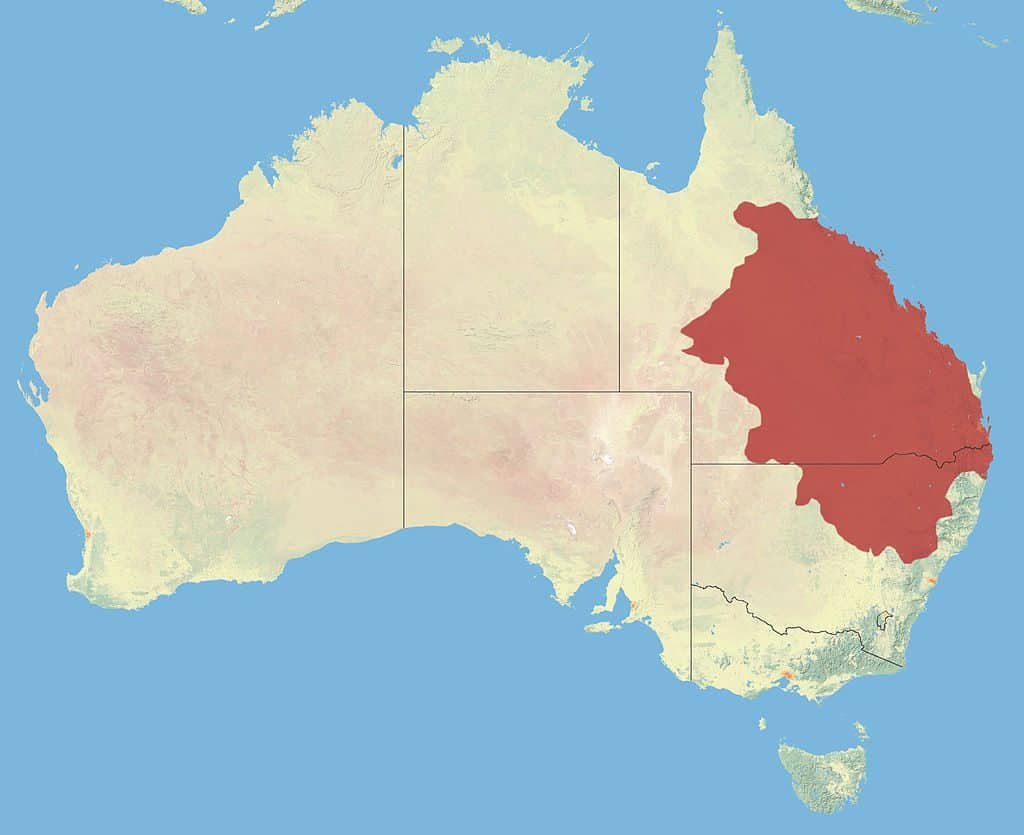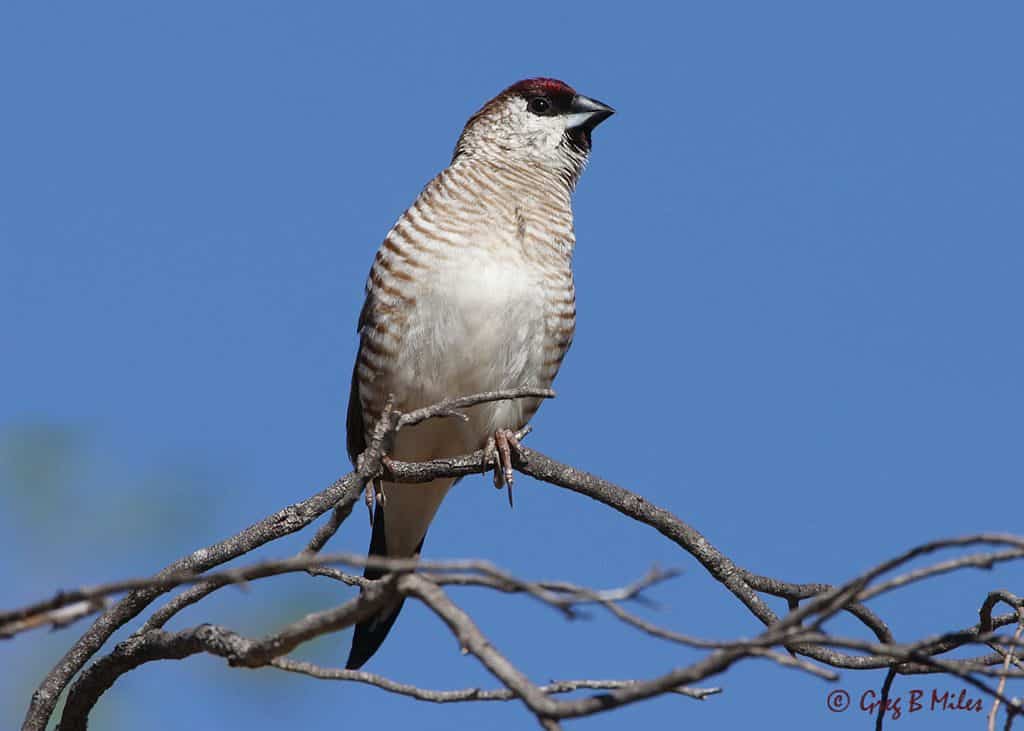Whether you know it as the Plum Headed finch or the Cherry Finch, this delightful species is one that may not have the flashy looks of others but has plenty of character. They make an excellent aviary bird and are relatively easy to keep.
In the wild
The Plum Headed finch (Neochmia modesta) is found across eastern Australia from Northern Queensland through to New South Wales. It is most often seen in tall grass or shrubbery near floodplains, rivers or swamps. Grass seeds is what they feed on mainly and this motivates where they live. They also use the same tall grasses for their nest building.
In the wild, the Plum headed finch often moves around within an area to find the right food and nesting places. They will often use lightly timbered areas and even farmland to find the right place to live.

Plum headed finch basics
Okay, these birds might not have the colours of the Gouldian or the song of a canary but they are endearing birds that are definitely worth keeping. They are around 11 cm in length with a deep plum or cherry red cap that is larger on the cock than the hen so sexing is easy. The males also have a dark spot under their beak that isn’t present on the female. Their faces are while then the dark barring starts that goes down most of the breast and along the flanks. Their backs are brown with some white spots on the wing and barring on the top of the tail. The lower tail is brown. There is also a fawn mutation with lighter coloured body but the same deep plum cap and are very attractive.

These birds can live in cages, aviary cages and flights along with a range of other species. They are ‘cousins’ to the Star Finch, Crimson Finch and the Red Browed Finch so can cross with these easier than other birds plus hybrids with species such as Zebras have been recorded, though most commonly if there are no mates of their own species around.
In captivity
As well as being sociable and easy to keep, the Plum Headed finches are characters. Like the Stars, they ‘peer’ at each other – when one bird is singing, others will lean close, staring at each other as if their song is the most interesting thing they have heard all day!
I’ve found myself that Cherry finch (as they are known to me) are quite active and interesting birds to watch and can also become quite tame. Mine would join Zebras and Bengalese coming to my hand for food on a morning.
They will feed from either a good basic foreign finch mix or from an Australian specialist mixture that contains grass seeds as well as the normal mixtures. They will also enjoy seeding grasses and leafy green vegetables while some live food can be offered and may be taken around breeding season but isn’t essential to chick rearing. The usual egg food, grit, millet spray and sprouted seeds will also be enjoyed. I’ve found them to be fanatical bathing birds so both drinking water and baths should be freshly available – they will make full use of them!
Breeding
Plum headed finch are generally quite steady breeders and will take a variety of nest boxes including wicker ones and wooden nests as well as building their own if there is the right kind of plants available. Fine grasses are a particular favourite in terms of nesting material as well as white feathers and white coconut fibres. They generally make a new nest for each round of chicks.
Four to six eggs are normal for each round and they can produce 2-3 rounds a year. they incubate for 13 days and fledge at around 21 days. The young are fully weaned by 21-28 days though they may return to the nest for a few days after fledging.
What produces better breeding results…………….. Single pairs per aviary or a colony of pairs per aviary?